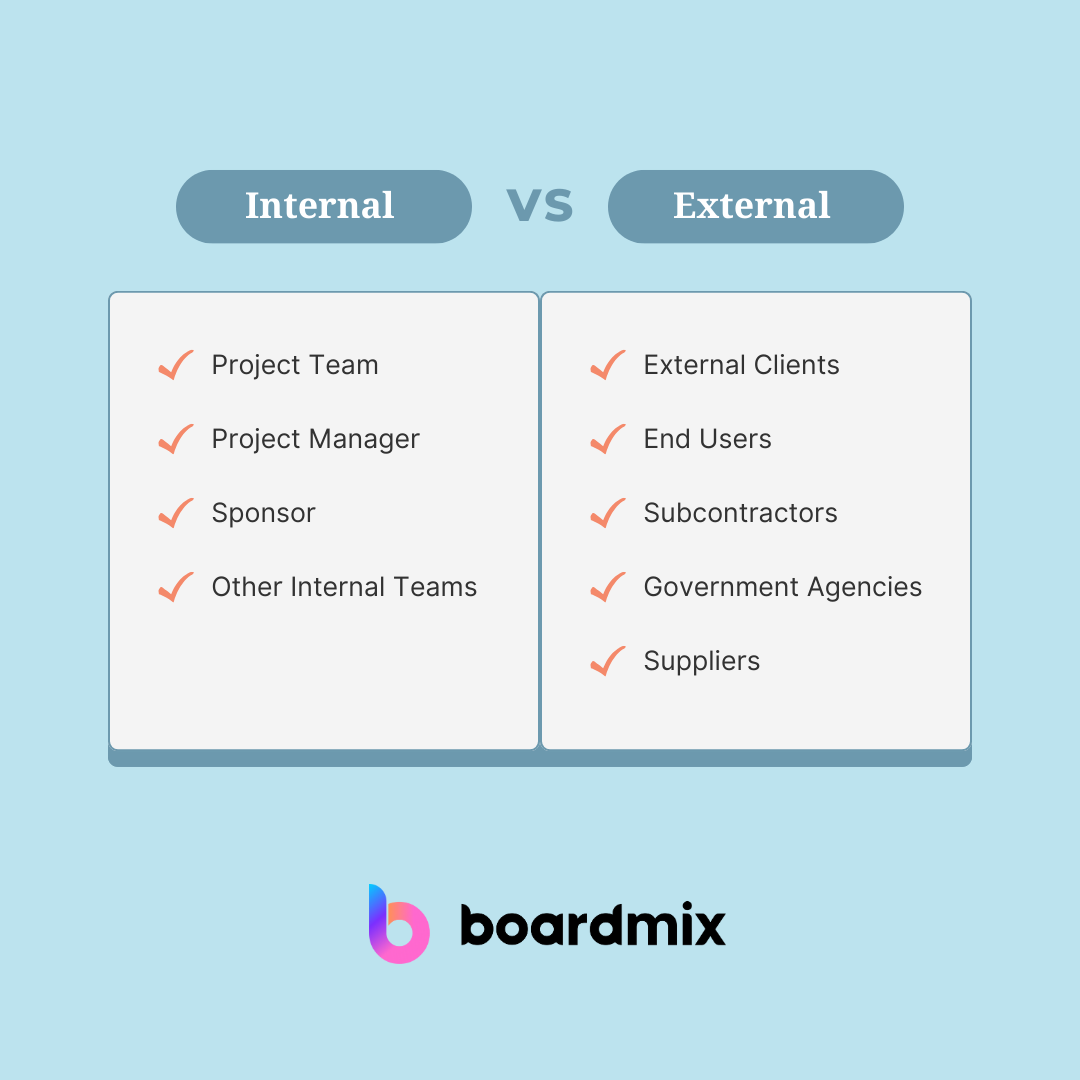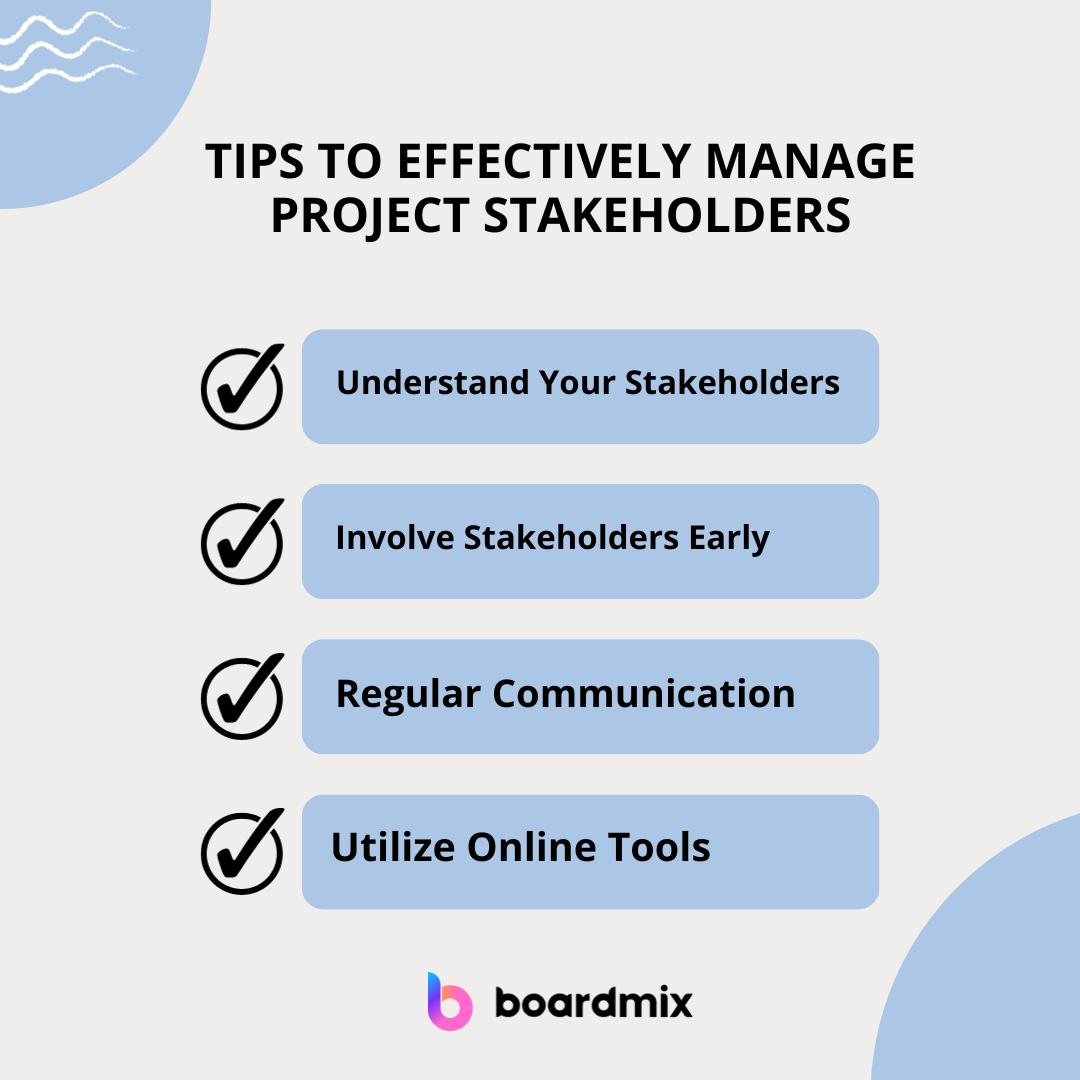In the realm of project management, knowing your stakeholders is a cornerstone of success. Stakeholders have direct or indirect stakes in the project and can influence its outcome in significant ways. Understanding who these individuals or groups are, how to engage with them effectively, and managing their expectations is crucial. Dive into this comprehensive guide to uncover the importance of stakeholders, the distinction between internal and external stakeholders, and explore tips to manage them effectively.
Who are Project Stakeholders? Who are Stakeholders in Project Management?
To answer this query, a stakeholder is any individual, group or organization with a vested interest in the outcome of a project. In project management, stakeholders play a significant role and their influence and contribution can heavily impact the final result of the project.
This is why understanding stakeholders and incorporating them into the project management process is critical to success. If the stakeholders are satisfied with the project outcome, it means that the project was successful. Therefore, managing stakeholders' expectations and having an understanding of their needs is a critical aspect of any project.
What are the Two Types of Project Stakeholders?
Broadly speaking, we can categorize stakeholders into two groups: Internal stakeholders and external stakeholders.

Internal Stakeholders in Project Management
These are people or groups within an organization who have a direct interest in the project's outcome. They include:
- Project Team:The people who are directly involved in doing the work of the project. They could be employees, consultants, or contractors.
- Project Manager:The individual responsible for overseeing and managing the entire project.
- Sponsor:This is the person or group who provides resources and support for the project.
- Other Internal Teams:Other teams within the organization that may be impacted by the project.
External Stakeholders in Project Management
These are individuals or groups outside an organization who have an interest in the project's outcome. They include:
- External Clients:The clients for whom the project is being undertaken.
- End Users:These are the people who will use the final product or service.
- Subcontractors:The third-party entities who might be hired to complete specific tasks.
- Government Agencies:They might have jurisdiction or regulations that need to be considered for the project.
- Suppliers:Organizations that provide necessary materials or services for the project.
Why are Project Stakeholders Important?
The importance of project stakeholders lies in their vested interest and consequential influence over the project. Whether the project is a success or a failure depends significantly on how effectively the stakeholders' expectations are managed, their needs are addressed, and their contributions are incorporated.
Firstly, project stakeholders hold diverse perspectives that can enrich the project's planning and execution. Their unique insights, drawn from different backgrounds and fields of expertise, can ensure that the project plan is comprehensive and addresses a variety of potential issues. This diversity also enables innovative ideas to surface, pushing the boundaries of what's achievable.
Secondly, stakeholders are often the end-users of the project's outputs. Whether they are internal employees who will use a new software system or external clients who have commissioned a building construction, their satisfaction with the project is a critical measure of success. Therefore, it is crucial to involve them in the decision-making process, ensuring that their needs are met and expectations managed effectively.
Furthermore, stakeholders like project sponsors and government agencies often have authority and resources that can influence the project's progression. For instance, project sponsors provide vital financial resources and high-level support, which can expedite the approval processes. Government agencies can facilitate or hinder projects based on regulatory compliance. Navigating these power dynamics wisely is an essential part of effective stakeholder management.
Lastly, both internal teams such as other departments that may be affected by the changes brought by the project and external entities like suppliers, subcontractors contribute to the project directly or indirectly. Their cooperation and efficiency impact project timelines and quality. Thus, maintaining good relations with these stakeholders is key to smooth execution.
How to Identify Stakeholders in a Project?
The identification of stakeholders is an integral part of the initial stages of a project. Understanding who your stakeholders are and what their interests might be allows you to make informed decisions about how to best engage with them.
Stakeholder identification involves analyzing your network and environment to determine who will be affected by your project and who has influence over it. You can then create a stakeholder register to document their interests, level of influence, potential risks, and communication requirements.
Tips and Techniques to Effectively Manage Project Stakeholders

Effectively managing project stakeholders requires a combination of communication, negotiation, and relationship-building skills. Here are a few tips:
- Understand Your Stakeholders:The first step in effective stakeholder management is understanding your stakeholders thoroughly. This involves not just knowing who they are but also comprehending their needs, interests, and expectations. Understanding what each stakeholder considers as a success in relation to the project can help align their expectations with the project's objectives. This understanding is established by constant interaction, active listening, and keen observation.
- Involve Stakeholders Early:Inviting stakeholder participation from the inception of the project increases their sense of ownership and commitment towards the project's success. It allows for early detection of potential issues or challenges that could impact the project negatively. Early involvement also facilitates shared decision making, enhancing buy-in and support for project decisions.
- Regular Communication:Clear and consistent communication with stakeholders is integral to prevent misunderstandings and align all stakeholders towards the common project goal. It's essential to establish a communication plan that details when, how, and what will be communicated. Regular status updates, meetings, and progress reports can aid in keeping everyone informed and engaged.
- Utilize Online Tools:Leveraging technology can significantly enhance stakeholder management. Tools like Boardmix, an online whiteboard and diagram maker, offer a platform for transparent, interactive, and efficient communication. With features that allow tracking project progress, visualizing strategies, and enabling real-time collaborative brainstorming, it facilitates better comprehension among stakeholders. Using such tools not only streamlines communication but also fosters an inclusive and collaborative environment.








